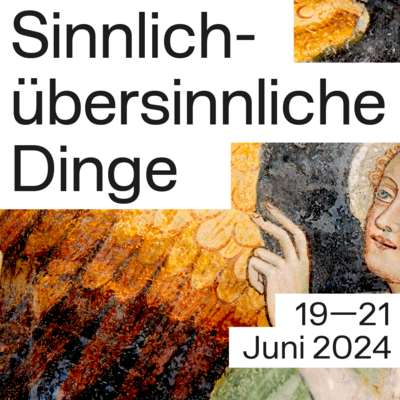Welcome at the Interface Culture program website.
Acting as creative artists and researchers, students learn how to advance the state of the art of current interface technologies and applications. Through interdisciplinary research and team work, they also develop new aspects of interface design including its cultural and social applications. The themes elaborated under the Master's programme in relation to interactive technologies include Interactive Environments, Interactive Art, Ubiquitous Computing, game design, VR and MR environments, Sound Art, Media Art, Web-Art, Software Art, HCI research and interaction design.

The Interface Culture program at the Linz University of Arts Department of Media was founded in 2004 by Christa Sommerer and Laurent Mignonneau. The program teaches students of human-machine interaction to develop innovative interfaces that harness new interface technologies at the confluence of art, research, application and design, and to investigate the cultural and social possibilities of implementing them.
The term "interface" is omnipresent nowadays. Basically, it describes an intersection or linkage between different computer systems that makes use of hardware components and software programs to enable the exchange and transmission of digital information via communications protocols.
However, an interface also describes the hook-up between human and machine, whereby the human qua user undertakes interaction as a means of operating and influencing the software and hardware components of a digital system. An interface thus enables human beings to communicate with digital technologies as well as to generate, receive and exchange data. Examples of interfaces in very widespread use are the mouse-keyboard interface and graphical user interfaces (i.e. desktop metaphors). In recent years, though, we have witnessed rapid developments in the direction of more intuitive and more seamless interface designs; the fields of research that have emerged include ubiquitous computing, intelligent environments, tangible user interfaces, auditory interfaces, VR-based and MR-based interaction, multi-modal interaction (camera-based interaction, voice-driven interaction, gesture-based interaction), robotic interfaces, natural interfaces and artistic and metaphoric interfaces.
Artists in the field of interactive art have been conducting research on human-machine interaction for a number of years now. By means of artistic, intuitive, conceptual, social and critical forms of interaction design, they have shown how digital processes can become essential elements of the artistic process.
Ars Electronica and in particular the Prix Ars Electronica's Interactive Art category launched in 1991 has had a powerful impact on this dialog and played an active role in promoting ongoing development in this field of research.
The Interface Cultures program is based upon this know-how. It is an artistic-scientific course of study to give budding media artists and media theoreticians solid training in creative and innovative interface design. Artistic design in these areas includes interactive art, netart, software art, robotic art, soundart, noiseart, games & storytelling and mobile art, as well as new hybrid fields like genetic art, bioart, spaceart and nanoart.
It is precisely this combination of technical know-how, interdisciplinary research and a creative artistic-scientific approach to a task that makes it possible to develop new, creative interfaces that engender progressive and innovative artistic-creative applications for media art, media design, media research and communication.
Sinnlich-übersinnliche Dinge. Versuchungen des Virtuellen
19. bis 21. Juni 2024 ifk, Reichsratsstraße 17, 1010 Wien & ifk Zoom
Magie, Religion, Kunst, aber auch Kulturtechniken wie Schreiben, Bildermachen oder Zählen lassen sich als Prozesse symbolischer Artikulation beschreiben, die sinnlich-übersinnliche Dinge hervorbringen. Sie führen stets einen virtuellen Überschuss mit sich, auf dessen Entfaltung, Organisation oder Beherrschung sie zielen, wenn sie nicht sogar explizit darauf abzielen, Virtuelles zum Erscheinen zu bringen. In dem ontologischen Grenzgebiet, das sich damit eröffnet, werden von jeher Trugbilder, Scheinkörper oder dämonische Akteur*innen aller Art vermutet, die täuschen, verführen, verzaubern. Konzentriert sich die Wissensgeschichte der Virtualität zumeist auf das »double-bind« von Digitalisierung und Entkörperung, rückt die Tagung Sinnlich-übersinnliche Dinge jene Varianten des Virtuellen in den Vordergrund, die den noch jungen Rahmen digitaler Medientechniken sprengen und eine Vielfalt von körperlich-unkörperlichen Verwandlungstechniken umfassen. Die Tagung hebt 1. die Querverbindungen zwischen Virtualität, Simulakrum und Dämonie bzw. Theologie hervor; 2. den produzierten und produktiven Charakter des Virtuellen; sowie 3. solche Techniken der Virtualisierung, die bislang aufgrund des vorherrschenden westlichen Ethnozentrismus noch kaum Berücksichtigung gefunden haben.
KONZEPTION: Karin Harrasser (Wien/Linz), Jakob Moser (Wien), Angelika Seppi (Berlin)
TEILNEHMER*INNEN: Christina Antenhofer (Salzburg), Natalie Binczek (Bochum), Nina Franz (Braunschweig), Rupert Gaderer (Bochum), Nora Grundtner (Innsbruck), Michael Hirschbichler (Zürich), Manfred Kern (Salzburg), Jasmin Mersmann (Berlin), Stefan Rieger (Bochum), Armin Schäfer (Bochum), Elisabeth Sedlak (Wien), Tina Terrahe (Greifswald), Lisa Wieder (Linz/Innsbruck), Eva Wilson (Berlin), Martin Zillinger (Köln)
Die Tagung wird in Zusammenarbeit mit dem Forschungsverbund VIRMA(Virtual Materiality / Material Virtuality, Paris Lodron Universität Salzburg) und dem SFB Virtuelle Lebenswelten (Ruhr Universität Bochum) veranstaltet.
Gefördert von der Stadt Wien
Nähere Informationen zur Teilnahme: https://www.ifk.ac.at/kalender-detail/sinnlich-uebersinnliche-dinge-versuchungen-des-virtuellen.html
